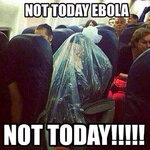drjeff
Well-known member
The admin and CDC is part of this clusterfVck, the (2nd) nurse ask the cdc if it was ok to fly even with an elevated temp., they did not restrict her.
http://www.nbcnews.com/storyline/eb...mber-vinson-checked-cdc-flight-source-n226961
When the aids pandemic (?) hit us many years ago, there was constant source of misinformation or unknowns. That in itself cost some lives.
True in hindsight there was some misinformation back during the onset of the aids crisis. But one also has to remember that with new and "emerging" infectious diseases, modern science often doesn't know the full mechanism of how it is an isn't spread until they've seen enough cases to see a repeatable trend of the infection process. And this is a BIG factor with the spread of infectious disease, since there can be hundreds if not thousands of variables in the infection process, and until one is able to eliminate a bunch of the variables, figuring out the "constants" can be a challenge. Let alone when some of the "detective" work that is done retrospectively often involves the investigator having to some extent rely upon the sick patient's, or a friend/relative/colleague of the sick patient's recollection of an event (the actual infection) that may have occurred days/weeks/months before
It's this detective process, and all the uncertainty around it, that can, and often does lead to misinformation being spread.
The bottom line is that one should assume, until the repeatable spreading mechanism of the disease process is determined, that it IS spread more easily than it may be portrayed. That may sound harsh and reactionary, BUT it's likely prudent in this case until we know how it spreads and how to stop the spread

